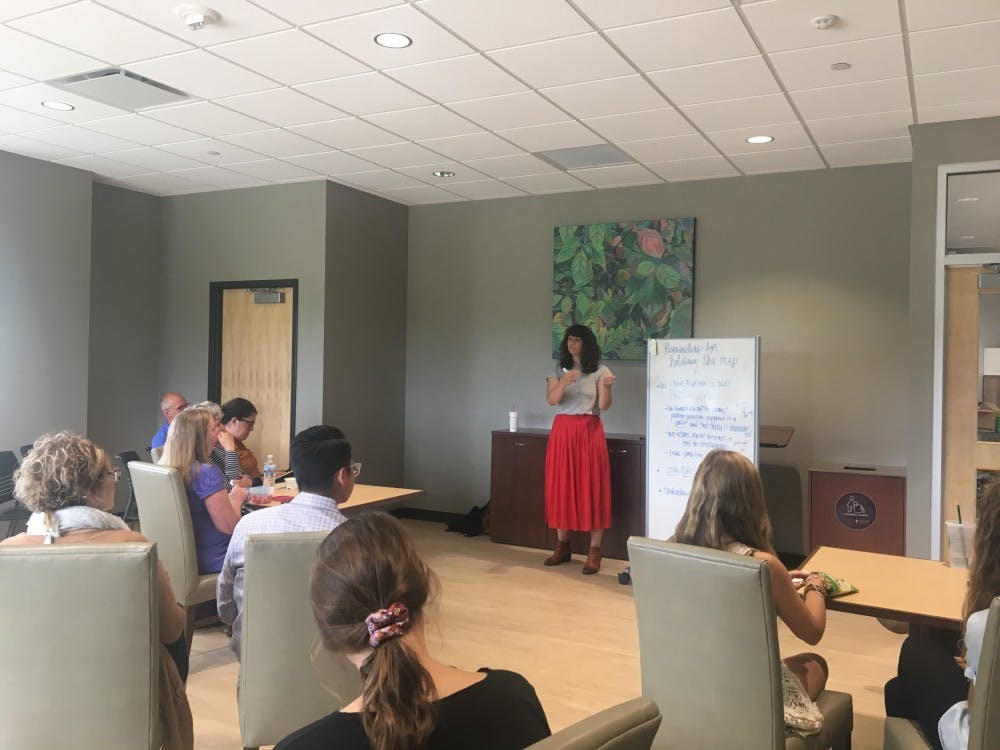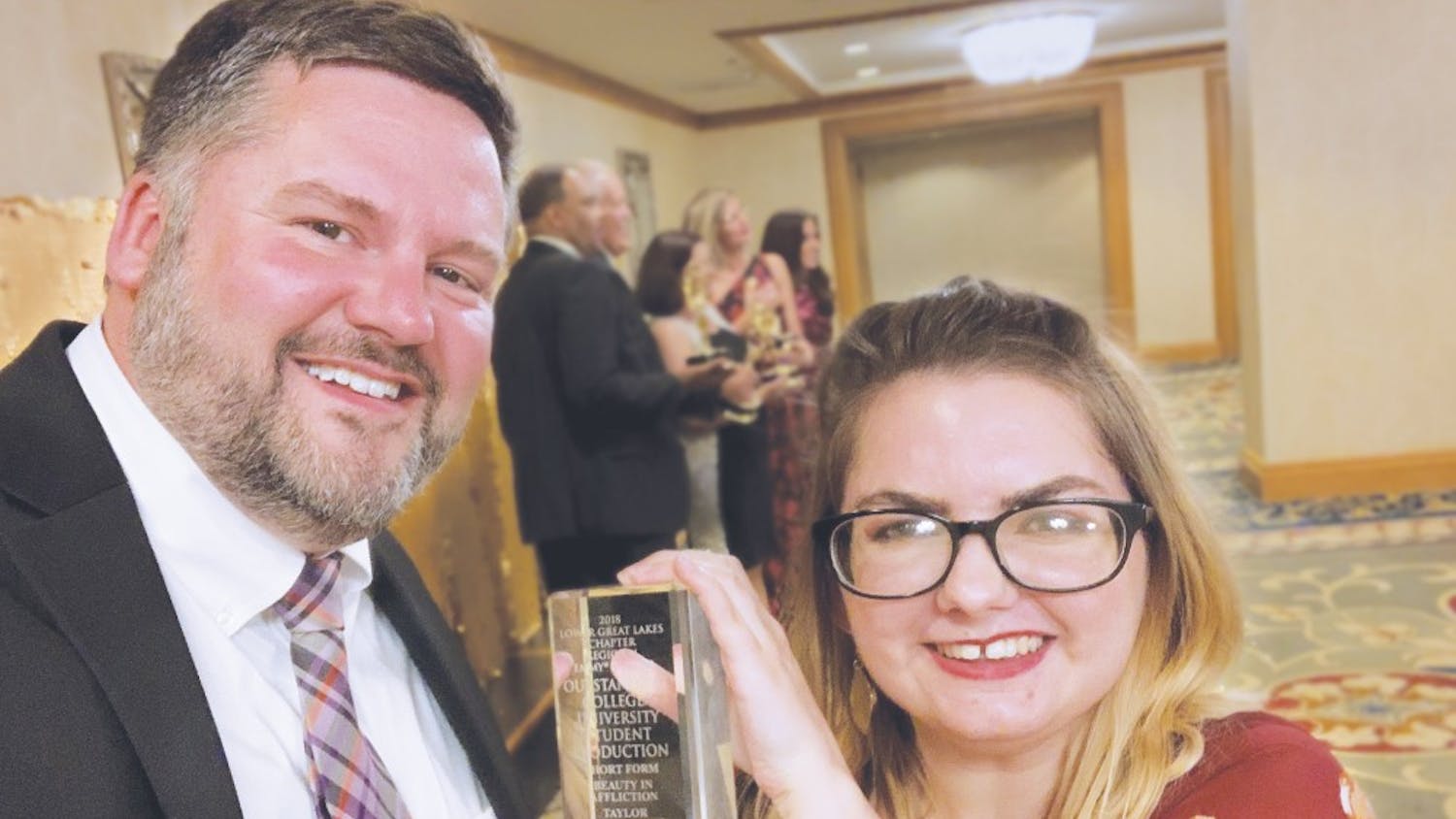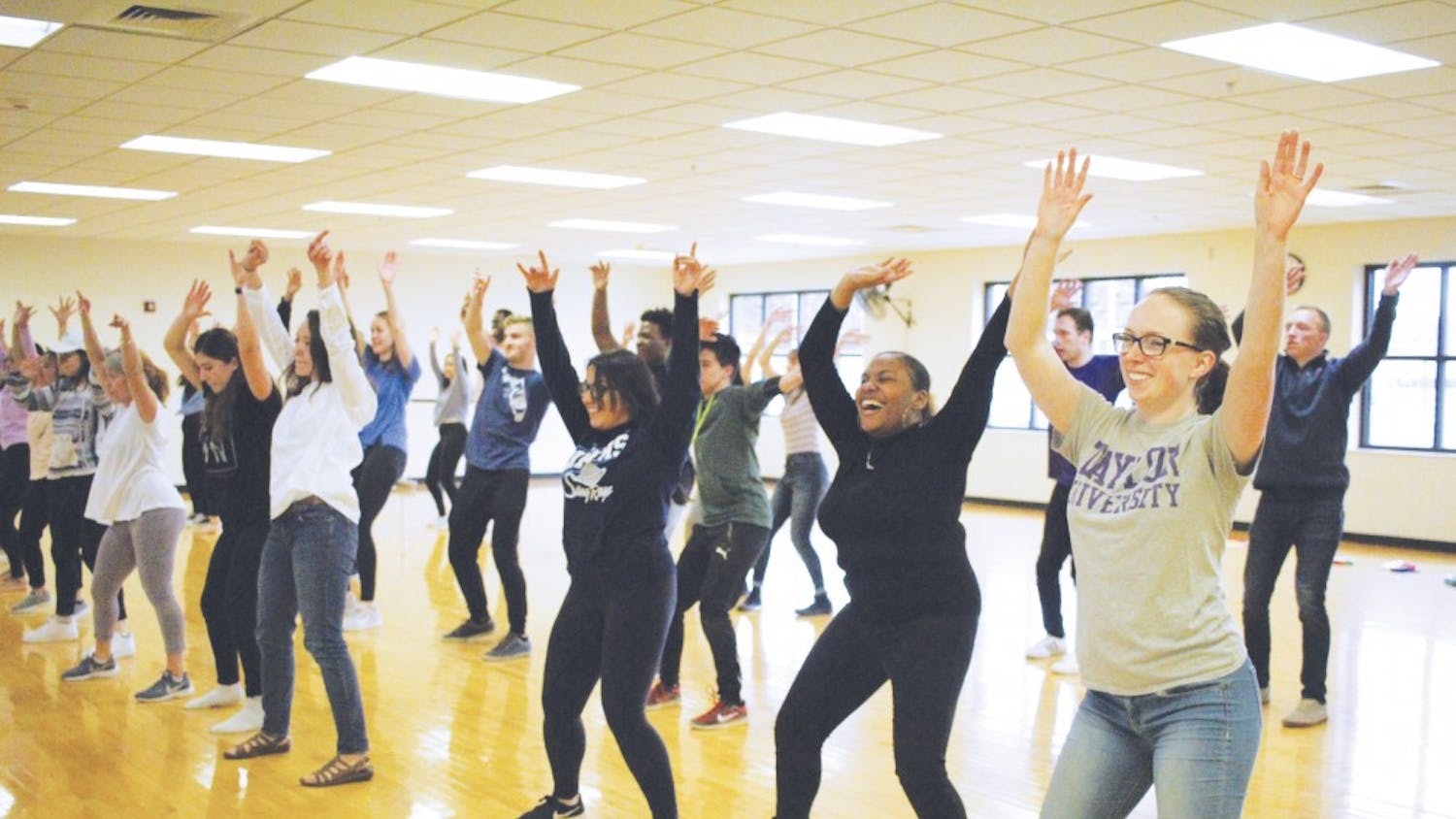While Taylor alumna Annie Dimond (‘11) has been studying and teaching the Enneagram for 10 years, she is actively working against some of the current culture surrounding it.
Also called The Enneagram of Personality, the Enneagram is a centuries-old personality model that has recently risen to broader popularity. In its most basic form, it includes nine personality types, each with different fears, gifts, motivations and integration patterns.
The nine types are normally referred to by their number type, one through nine, or their characteristic role.
Dimond began her Sept. 6 presentation, “Learning to Hold the Map,” by addressing some frustrations with the current culture surrounding the Enneagram. Dimond, as a certified Enneagram teacher in the narrative tradition, said many people like to misuse and oversimplify the Enneagram despite it being an incredibly complex, deep and personal tool.
“A lot of times we want to use the Enneagram really flippantly, not just with other people but also with ourselves,” Dimond said. “It’s easy. We’re in an input, output culture — if I know this thing, then I can quickly fix this thing . . . but if we aren’t willing to suffer with ourselves or other people, then we shouldn’t bring up the Enneagram.”
Although she looked at many different parts of the Enneagram and the culture surrounding it, Dimond primarily encouraged students and faculty to consider the Enneagram in three ways — interpretively, invitationally and compassionately.
While Dimond believes the Enneagram is an impactful tool, it is not something people are bound to. At any moment, someone of one type might make decisions that are more reflective of another type.
“The only reason I work with the Enneagram is that it’s not predictive,” Dimond said. “The reason I coach people and work with type is that meaningful deviation is possible . . . you can’t tell from the outside what people are choosing from the inside — if they’re choosing courage or hope. And so consistently just naming type behavior doesn’t help us get to the work of the type, which is learning how to accept and be present to invitations and possibilities.”
Dimond also believes people should be more inviting and compassionate with the Enneagram. A strong theme in the Enneagram is a “childhood wound” that creates a basic fear, which is a vulnerable and sensitive topic. In her experience with Jesuit priests, who were the first Christians to adopt the Enneagram, it was even a sacred and secretive topic only discussed with close spiritual advisers.
Additionally, Dimond said as people work toward integration and transformation, there has to be an invitation for growth and compassion. Simply bringing up someone’s type and its various implications will not spur growth, but being a loving and supportive friend will.
“What value is it in naming these things and bringing them up if we don’t want to participate in a culture of healing and grace?” Dimond said.
Dimond ultimately said she wants people to enjoy the Enneagram and prayerfully consider the complexity of it and each person. She said while she sees the Enneagram as a valuable roadmap, people cannot go on a journey solely looking at the roadmap, they have to look up and be present as well.
For the various students, staff and faculty listening, Dimond’s message was an invitation to look below surface-level usage of the Enneagram. Sophomore Abbey Chandler said she specifically enjoyed looking at how Dimond pointed to specific parts of the Enneagram and how countercultural it is. She also appreciated how honestly Dimond shared from her personal experiences with the Enneagram in her and her family’s lives.
Dean of Student Engagement Drew Moser has had Dimond host multiple Enneagram workshops over the years and also valued her whole person-focused approach.
“I deeply appreciate her ability to integrate the physiology, science, psychology into this thing that everybody is obsessed about right now,” Moser said preceding the presentation.
For more information, Dimond can be found online at enneagramforwholeness.com or on Instagram as Enneagram for Wholeness.





